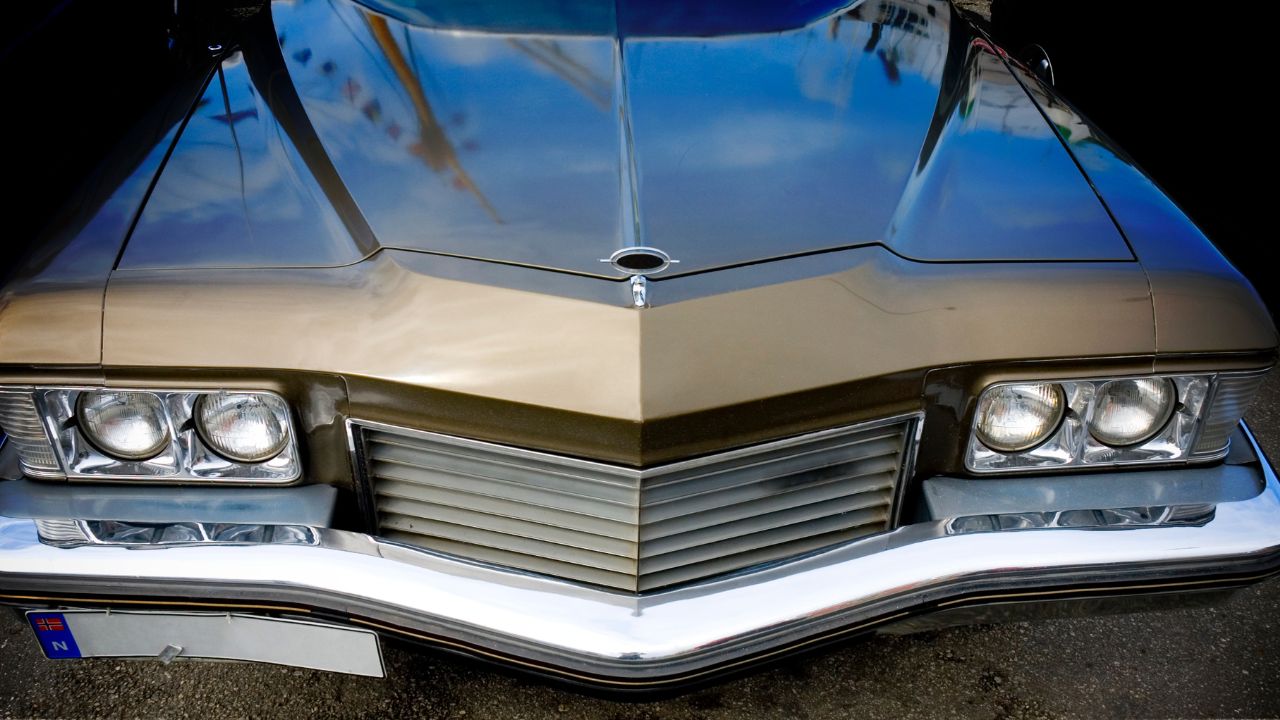
If you're looking for a new car in 2019, you might be considering one of the many muscle cars on the market today. You may have heard of the Dodge Challenger, the Kia Stinger and the Chevrolet Camaro ZR1. However, it is possible to compare these cars to determine which car is the best. These are the best muscle cars you can buy today. Find out what makes each of these vehicles so special.
Chevrolet Camaro ZR1
The 2018 Chevrolet Camaro ZR1 boasts a lot. It's a muscular car with powerful V8 horsepower and modern technology. The ultimate version includes a number of new features not found in the base model. It has an eight-way driver's seat with memory and cruise control, heated Recaro seats front seats, and a heated steering column. Wireless charging, a 24 color ambient lighting system, power trunkrelease, and rear park sensors are other features.
The ZR1 is a mind-blowing car in terms of horsepower. The ZL1 1LE Camaro muscle car is derived from ZR1. It has 1,000 horsepower. It can reach speeds of 217 mph. This car is for people who enjoy high-performance and roaring V8 muscle cars. It can also hold more than 500lbs of torque!

Kia Stinger
The 2020 Kia Stinger features a new trim level called GTS. There are many upgrades to the standard features. The new features include a blind spot monitor, a head-up display and automatic emergency brake. You also get heated rear seats, wireless charging for your smartphone, and a surround view camera. The GT trim adds rear spoilers. The GT1 & GT2 trims now come with lane departure warnings as well as cruise control and A/C seat.
The suspension is tuned for a perfect balance between stiffness and comfort. Sport drive mode allows the suspension to firm up slightly, but it still minimizes floatiness. Brakes remain the weakest link in the car. Brembo brakes are good for daily driving, but they can fade very quickly when the car is driven. Kia Stinger muscle cars 2019
Dodge Challenger
The Dodge Challenger was a muscle vehicle that was very popular in America since its debut in 1967. This car was originally known as SRT8. The base model is powered by 305 horsepower and 268 pounds of torque. The 5.7-liter V-8 version has 379 horsepower. Along with these improvements, the Dodge Challenger 2022 will have electric power steering and a huge center console which doubles to hold smartphones.
The Dodge Challenger, as it is known today, is twelve years-old. FCA sold 61,000 Challengers last year, which was 13,000 more than the Chevy Chevy Camaro. This is due to muscle cars' enduring popularity. The Dodge Challenger muscle car is popular because of the brand's nostalgia. After a 30 year hiatus, it was returned to production in 2008. It was sold in 1971 under the Silver Challenger brand.

Dodge Charger vs Dodge Charger
The Dodge Charger is a better choice than muscle cars if you are looking for a new car. Both have the same base engine and basic powertrain, but the V8-powered Charger stands out as being more unique. Both have an impressive array of wheels and a distinct front. Although the Charger is much more thrilling to drive, it can also prove costly to insure.
There are many differences in the Dodge Challenger and Dodge Charger when it comes to power. Muscle cars have powerful V8 engines while sports cars are lighter and more agile. Because of this, the Charger is better suited to driving in tight spots. Whether you choose the muscle car or the sports car depends on your personal preference and budget, but both cars are fast and can compete in street racing.
FAQ
What are the qualifications for an automotive technician
You need to have high school diploma or GED and good grades in English as well as maths. Also, you must be able read and write. To be allowed to work, you must pass a written and practical test.
What are the basics of car mechanics?
To work as an auto technician, you don’t need to know much about cars. The only thing you need is the ability to fix them. Most people start by fixing things like changing tires or fitting brake pads.
It is important to be able to read and understand diagrams as well as written instructions. You'll also need to be able to judge whether parts need replacing or repairing.
It is important to understand that vehicle repairs should only be attempted by those who have received the proper training. This is especially true if you deal with expensive components such as engines or transmissions.
Although you won't have to know much about automobiles, you must be familiar with the basics of mechanical engineering as well as physics. This includes understanding the mechanics of how engines and brakes work.
It is also important to remember that you will need to be able to handle many situations. For example, you may find yourself working on a vehicle that has been involved in a serious accident. Experience with accidents and breakdowns is also a must.
Finally, you must be willing to learn new skills quickly. It is important to be able both to diagnose problems and perform simple maintenance tasks, such as tightening nuts.
Is it easy to get a job as an automotive mechanic?
Yes, it can be very easy. Many garages post their vacancies online. Many people apply simply because they think it might make them feel good. Try applying to a few jobs and seeing if the garages accept student applications. You could also ask your family and friends if they know anyone in the industry. They might be happy to recommend someone.
How long is an automotive course?
A three-year course in automotive is required.
The first year is spent on theory, learning all about cars. The second year is spent on practical training where you learn how to drive, fix engines, and do other mechanical jobs around the car. You will spend the final year working in a local garage to gain real-world experience.
Statistics
- The U.S. Bureau of Labor Statistics (BLS) reports that the job outlook for automotive service technicians and mechanics is expected to decline by 4% from 2019 to 2029. (indeed.com)
- According to the BLS, the median annual salary for automotive service technicians and mechanics in the United States was $44,050 in May 2020. (uti.edu)
- There were 749,900 jobs available for automotive service technicians and mechanics in 2016, which is expected to grow by six percent through 2026. (jobhero.com)
External Links
How To
How to become an Automotive Technician
An automotive technician provides repair services and maintenance to vehicles. He/she works at automotive shops, garages or service centers. Customers can rely on him/her to fix their cars, trucks and motorcycles. An automotive technician must be capable of diagnosing problems and making repairs safely, accurately and efficiently.
If you want to be an automotive technician, you need an associate degree from vocational school. After completing the program, he/she must take the National Institute for Automotive Service Excellence certification exam. ASE stands in for American Society of Mechanical Engineers. The ASE certification test consists of two sections. The first section tests your mechanical skills, while the second tests your practical knowledge. You must attend one of the authorized testing sites to take the test. These locations can be found online, or by contacting your local car dealer.
A candidate must pass the state exam after passing the test to become an automotive technician. It varies depending on the location of the applicant. Some states require candidates to complete a training program, while others let them study on their own. Some states require technicians to be licensed immediately upon receiving their license. Other states wait until they have been employed as automotive technicians for at least six month.
To get started as an automotive technician, a person should apply to a local automotive dealership. Most employees who are hired start as apprentices. Apprenticeship programs typically last three to four years. This is when a student can learn how to do basic repairs such as changing oil, adjusting brakes and replacing tires. Some students are able to perform more advanced repairs such as replacing shocks and installing air filters. Most schools offer classes during regular business hours. Some schools also offer evening classes when needed.
Once a student completes his/her apprenticeship, he/she becomes a journeyman. Journeymen typically spend four to five years learning how to install major systems, such as transmissions, differentials, steering gear, suspensions, and drive shafts. You will also learn how to repair complicated electrical components, as well as how to remanufacture engines and rebuild transmissions. Employers prefer to hire journeymen as they are familiar with the job and can anticipate customer needs.
After passing the exams, candidates may be eligible to open their own shop if they pass all requirements. According to the Bureau of Labor Statistics in 2010, nearly 1.7 Million automotive mechanic jobs were available. That number was expected to grow by 18 percent from 2009 to 2020. If a candidate decides to open his/her own shop, he/she should prepare to invest many thousands of dollars in equipment and supplies.
There are many factors that affect the salary of an automotive technician, such as where they live, their education and experience. An average salary for a jobless individual is $20,000 per annum. An individual with a high school diploma can earn about $21,000 per annum. Earnings for those with an associate's diploma are approximately $24,000/year. Technicians with a bachelor's degree earn about $27,000 per annum. Master's degree holders make around $32,000 annually. Salary increases can be common. A professional who earns less that $30,000 today could reasonably expect a $40,000 increase in the next few decades.